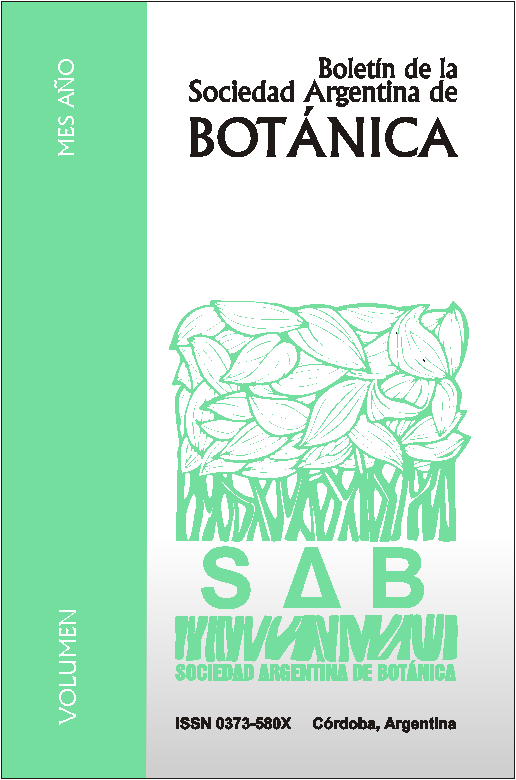Variación estacional de saponinas en Solidago chilensis var. chilensis (Asteraceae)
DOI:
https://doi.org/10.31055/1851.2372.v49.n4.9882Palabras clave:
Ganado, maleza tóxica, órganos aéreos, órganos subterráneos, planta medicinal.Resumen
Solidago chilensis Meyen var. chilensis es una maleza ampliamente distribuida en Argentina.S. chilensis es una especie tóxica para el ganado debido a la presencia de saponinas. Sin embargo,tiene diversos usos medicinales y es además una especie melífera. El objetivo de este estudio fueanalizar la variabilidad estacional en el contenido de saponinas presentes en órganos subterráneos yaéreos de S. chilensis, por medio de un método cualitativo. El contenido de saponinas se determinópor la altura de la columna de espuma de una solución acuosa obtenida a partir de material vegetalfresco de diferentes órganos de la planta (rizomas, raíces, tallos, hojas e inflorescencias). Los órganossubterráneos presentaron saponinas durante todo el año, pero la presencia en hojas también resultóaltamente positiva en verano y otoño (marzo-abril). Estos resultados sugieren que esta última sería laépoca del año apropiada para extraer saponinas de S. chilensis en condiciones naturales.Referencias
Seasonal variation of saponins in organs of Solidago chilensis var. chilensis (Asteraceae). Solidago chilensis Meyen var. chilensis is a widely distributed weed in Argentina. Owing to the presence of saponins, S. chilensis is a poisonous weed for cattle. However, it has several medicinal uses and it
is considered a melliferous species. The purpose of this study was to analyze the seasonal variability in the saponin content of subterranean and aerial organs of S. chilensis by a qualitative method. Using an aqueous solution obtained from fresh plant material of different organs (rhizomes, roots, stems, leaves and inflorescences), the saponin content was determined by the height of the foam column of the solution. Saponins were always present in subterranean organs of the plant (roots and rhizomes), but also gave a highly positive reaction in leaves from the end of summer to early autumn (March-April). Accordingly, between March and April, is the most suitable period to extract saponins from S. chilensis under natural conditions.
Descargas
Número
Sección
Licencia
El Bol. Soc. Argent. Bot.:
- Provee ACCESO ABIERTO y gratuito inmediato a su contenido bajo el principio de que hacer disponible gratuitamente la investigación al público, lo cual fomenta un mayor intercambio de conocimiento global.

- Permite a los autores mantener sus derechos de autor sin restricciones.
- El material publicado en Bol. Soc. Argent. Bot. se distribuye bajo una licencia de Creative Commons Atribución-NoComercial-CompartirIgual 4.0 Internacional.







